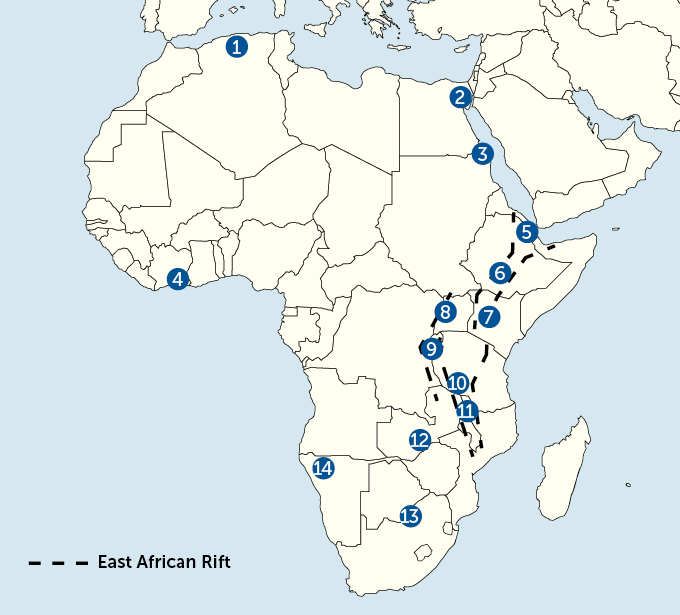How Kenya is helping its neighbors develop geothermal energy
East Africa has the potential to generate a lot of electricity from this renewable source

Geothermal energy accounts for almost half of Kenya’s total energy production. The majority of that energy is produced at the Olkaria power project (shown).
TONY KARUMBA/AFP via Getty Images
The dusty town of Naivasha sits within the Great Rift Valley, where the African continent is being divided into two. About 90 kilometers northwest of Kenya’s capital city of Nairobi, Naivasha welcomes gaggles of tourists each year trekking to Hell’s Gate National Park. The forces that are splitting apart the African tectonic plate have sculpted the area’s steep cliffs, plummeting valleys and undulating hills — a rugged landscape that inspired the backdrop of Disney’s The Lion King.
Those forces have also made Naivasha the frontier of Kenya’s geothermal power industry.
The country’s first geothermal well was drilled there in the 1950s. By 1981, Kenya had its first geothermal power plant, harnessing a renewable resource that taps into heat generated deep within the Earth. Today, Naivasha’s Olkaria geothermal power project plus a small facility at another site are capable of generating 963 megawatts of electricity when running at full power.
At the end of last year, Kenya ranked seventh on the list of top geothermal energy countries in the world. Geothermal accounts for 47 percent of the country’s total energy production — a percentage that’s growing. The only other geothermal energy producer in Africa, Ethiopia, started production in 1998 and has an installed capacity of just 7.5 megawatts.
But regional interest is growing, especially as Africa works toward universal energy access by 2030, in accordance with the United Nations’ Sustainable Development Goals. Roughly 43 percent of the continent’s population, equaling about 600 million people, lacks access to electricity. A 2021 analysis by the Dalberg consulting firm in partnership with the U.N. showed that there’s enough renewable energy potential to power Africa’s energy needs well into the future, though the up-front costs would be higher than if fossil fuels were used to meet those energy demands.
If African countries pursue renewable energy to meet their electricity goals, the up-front cost would be $1.5 trillion, about 50 percent more than the $1 trillion that fossils fuels would require, says James Mwangi, formerly of Dalberg and founder of the group Climate Action Platform for Africa. But thanks to lower operating and maintenance costs, renewables eventually pay off. In one scenario in the Dalberg analysis, a renewable-heavy future would take 13 years or so to break even with one where fossil fuels are still heavily used.
With the renewables route, Mwangi says, “Africa could reach universal energy access much faster and ultimately have the lowest energy costs in the world.” The localized nature of renewable sources, compared with often-imported fossil fuels, could also enhance energy security and independence.
In East Africa, geothermal energy is an attractive option. It’s abundant thanks to the East African Rift System, which brings heat toward the surface. Like other renewable energies such as wind and solar, geothermal doesn’t emit carbon dioxide. And it comes with extra benefits. “Geothermal power is reliable,” says Anna Mwangi, senior geophysicist at the Kenya Electricity Generating Company, or KenGen, the government entity that operates Olkaria (and no relation to James Mwangi). Geothermal sources are available night and day, and don’t depend on the sun, wind or rain. So geothermal energy may be more resilient to climate change than some other renewables.
But setting up geothermal power plants requires more money and specialized expertise than other renewable energies. And like any development project, it can come with social costs, such as displacing people from their land.
Given its long-standing experience, Kenya is now assisting its neighbors. “We are offering technical support to the countries in the region, as a way to help them develop their geothermal potential,” says Anna Mwangi. KenGen has already drilled multiple geothermal wells in Ethiopia and Djibouti.
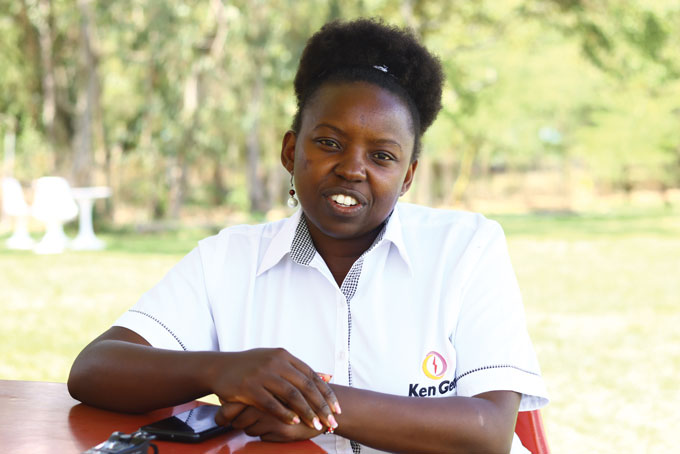
Why East Africa is a geothermal energy hot spot
Globally, geothermal resources are often found along the boundaries of tectonic plates, such as around the Pacific Ocean’s Ring of Fire. In Africa, a bounty of geothermal resources exist where a new boundary is forming: the East African Rift System. The exact start of the system is not clearly defined; it originates on the Arabian Peninsula before running south along the Red Sea and into Djibouti. As it runs southward in Africa, the rift zone branches into two arms: The eastern arm ends at the border between Kenya and Tanzania while the western arm goes farther south, running 6,400 kilometers through more than 10 countries before ending in Mozambique.
For millions of years, the African Plate has been pulled in opposite directions, at a rate of a few centimeters per year. Eventually, this stretching will split Africa into two separate continents and create two tectonic plates, the Nubian Plate to the west and the Somalian Plate to the east.
The stretching also causes magma to dome up in various points along the rift system. One such place is Olkaria in Naivasha. Beneath the surface, the molten rock heats groundwater. Wells bring that hot water and steam to the surface. When harnessed at high pressure and used to turn turbines, the steam generates electricity. The hot water is then injected back into the ground to recharge the subterranean water supply.
There’s no comprehensive estimate for how much total energy East Africa could harvest from geothermal sources. But experts estimate that Kenya and Ethiopia could each generate 10,000 megawatts. That’s roughly triple Kenya’s total installed electricity capacity and double Ethiopia’s.
For now, it’s mostly Kenya — one of the world’s fastest-growing geothermal power players — that has plumbed this deep heat. In addition to Olkaria, there’s a small site at the nearby Eburru geothermal field that can generate 2.4 megawatts of electricity. Farther to the north, a 35-megawatt power plant is expected to open this year at the Menengai geothermal field, with another one in development.
A push toward geothermal energy in recent years has come as droughts have dwindled some of Kenya’s hydropower sources. With rainfall and temperatures projected to become more erratic and extreme with climate change, geothermal energy may be the more dependable option, Anna Mwangi says.
Geothermal power plants can run at maximum power output up to 90 percent of the time, when taking downtime due to maintenance into account, says François Le Scornet, president and senior market intelligence consultant at Carbonexit Consulting in France. That’s comparable to a nuclear power plant and about twice as reliable as a fossil fuel plant or wind farm (and four times as good as solar). Indeed, with the rise of geothermal energy, Kenya’s power outages have declined, according to a report released in February by the International Renewable Energy Agency and the International Geothermal Association.
The scalding-hot water and steam that flow up a geothermal well can do more than generate electricity; they can also be a direct source of heating. The Oserian flower farm near Naivasha, for instance, pipes the water in to warm a greenhouse at night. The warmth dries out the air to prevent fungus from spoiling the roses, carnations and other flowers destined for bouquets around the world. At Olkaria, tourists in need of relaxation after a long day of exploring Hell’s Gate can soak in the geothermal spa near the power plant.
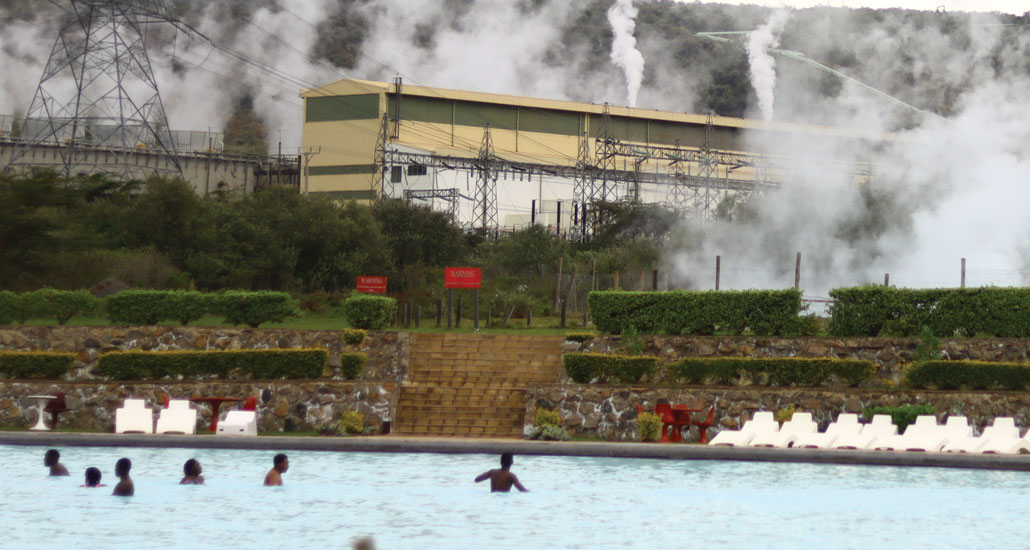
How to find geothermal resources
It takes a team of specialists to determine a site’s suitability for geothermal resource exploration. At minimum, what’s needed are the presence of groundwater, high temperatures — often around or above 150° Celsius — and permeable rock that will enable heated water and steam to flow into production wells, says Mohamed Abdel Zaher, a geophysicist at the National Research Institute of Astronomy and Geophysics in Cairo.
Certain visual characteristics on the surface may give an initial hint. Hot springs, hot mud puddles, geysers and even steam rising from the ground are signs of geothermal activity. Another clue is the presence of certain rocks, such as travertine, or mineral veins like quartz that indicate rock has been altered during interactions with hot water.
At Olkaria, a tip-off was the fact that the surrounding area is ring-shaped like a caldera, a collapsed volcano. A series of younger volcanic domes appear to have intruded into the caldera.
If the surface characteristics look promising, geochemists will step in to analyze fluid and gas samples to estimate how deep and hot the heat source might be and where the fluids flow. Seismometers might be deployed to infer the brittleness of the subsurface rock. It’s important that rock be permeable, but it needs to be strong enough to withstand the interaction of cool water being heated from the magma below.
If all those data look promising, exploration drilling will commence and if all goes well, a production well and eventually a full-blown power plant will follow.
Zaher and his colleagues recently completed a project that might help experts across the continent zero in on potential geothermal targets before starting costly on-the-ground exploration. “It is quite difficult to predict the precise power or electricity that can be produced for all of Africa,” he says. But his group incorporated a range of geologic, seismic and other geophysical data into a geographic information system to predict the most promising spots for geothermal exploration. The resulting map identifies 14 areas that have high geothermal potential, the team reported last year in Geothermal Energy.
Not surprisingly, many of these locations are within the East African Rift System, though high potential also exists in northern Africa in Morocco, Algeria and Tunisia, as well as in Liberia, Namibia, Zambia and South Africa. In many of those countries, the tectonics are such that using geothermal energy for direct heating — as is done at the Oserian flower farm and could be applied in a variety of settings, including industrial processing — may be more feasible than for electricity generation, Zaher says.
Work beyond Kenya
KenGen has led on-the-ground geothermal exploration in a number of nearby countries. In addition to the drilling done in Ethiopia and Djibouti, surface studies to identify potential geothermal resources have been done in Sudan, Uganda, Rwanda, Tanzania, Zambia and the Comoros islands off the coast of Mozambique, Anna Mwangi says.
In addition, KenGen — in collaboration with the Icelandic-based GRÓ Geothermal Training Programme and Kenya’s Geothermal Development Company — has been training university students, energy professionals and government officials within East Africa on geothermal resource exploration and development, as well as power plant financing and management. With help from the World Bank, Kenya is also setting up the Geothermal Centre of Excellence, which will train professionals in the region once it opens in a couple years, Mwangi says.
Even with the right technical knowledge, though, it can take several years to go from exploration to geothermal energy production. In fact, even once a well has been drilled, it could still take up to a decade or more before a power plant is up and running. Funding constraints can be one barrier.
This is what Kenyan engineers were faced with in 2012, Mwangi says. Wells had already been drilled, yet funding for putting up power plants to generate electricity at full capacity was still unavailable.
This opened an avenue for experimentation. Typically, a power plant is supplied with water and steam from multiple wells at varying distances away. But a new wellhead approach, which hadn’t been implemented anywhere in the world, allowed for the generation of power directly and quickly from a single well, at low cost, in the meantime.
Once a permanent power plant is ready to be built, the wellhead installation can be disassembled and taken to another well for the same purpose. About 85 megawatts of power have been produced this way in Kenya. “Such well-based power plants give us the early generation benefit, and generate revenue in the meantime,” Mwangi says. “Otherwise, these production wells would have remained capped awaiting construction and commissioning of a new power plant.”
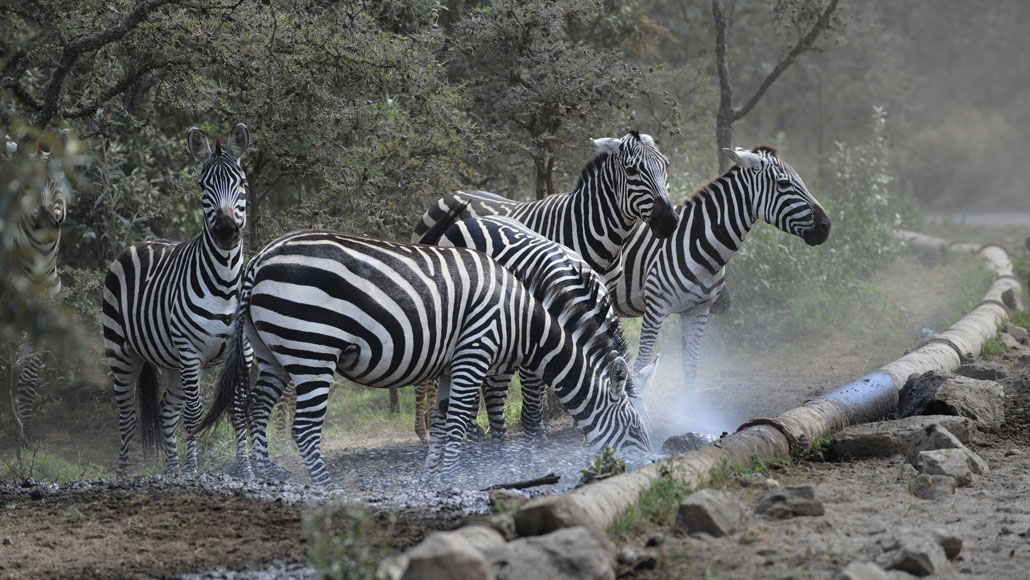
The costs of geothermal energy
Even as interest and expertise in geothermal energy grow in East Africa, financial constraints remain an impediment. In Kenya, a single geothermal well can cost about $6 million to drill, and it can be another $300 million to build a roughly 165-megawatt plant.
“Up-front capital cost is high in geothermal, but running costs are limited,” says Le Scornet, the energy consultant.
The worldwide levelized cost of electricity, or LCOE, for a new geothermal installation in 2021 averaged $0.068 per kilowatt-hour, according to the International Renewable Energy Agency. The LCOE is the lowest price at which electricity can be sold for an energy project to break even. The figure takes into account lifetime costs, from building a plant to operating and maintaining it.
Geothermal’s LCOE is about 40 percent higher than a new hydropower project or solar photovoltaic array, which have an LCOE of $0.048 per kilowatt-hour. An onshore wind farm is about half as expensive, at $0.033 per kilowatt-hour, but geothermal energy is slightly less costly than an offshore wind farm’s $0.075 per kilowatt-hour. (For context, Kenya’s per capita energy consumption in 2019 was about 168 kilowatt-hours, according to the U.N.)
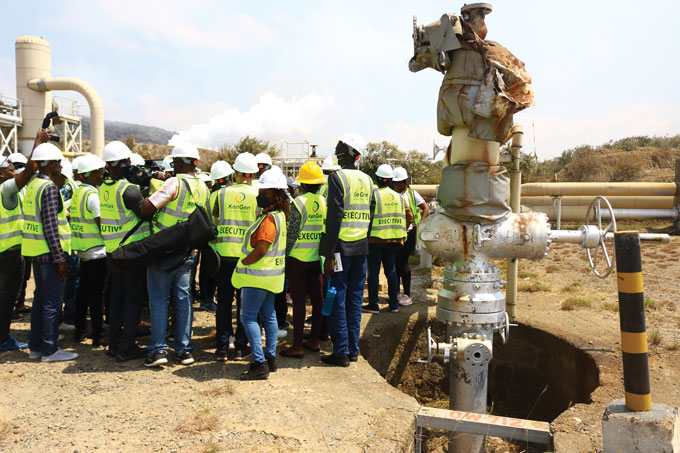
Le Scornet says that stable financing mechanisms are needed to provide stability and reduce actual and perceived project risks. To tackle this challenge, the Geothermal Risk Mitigation Facility, funded by the European Union and the African Union, was set up in 2012 to cofinance surface studies and drilling programs.
“Support from project partners like the EU, for instance, and the African Development Bank can be instrumental, especially in countries with high debt levels and where competition with alternative projects presents obvious challenges for the development of new geothermal projects,” Le Scornet says.
But not all costs are purely financial. Kenya’s Olkaria project demonstrates one of the social costs. In developing and expanding the project over time, some members of the local Maasai community, a seminomadic pastoralist group, have been removed from their land, says Ben Ole Koissaba, lead consultant for Rarin Consulting Services, which champions for the land rights of Indigenous communities. Relocated people “have been cut off from the rest of the community,” says Koissaba, who is a member of the Maasai. And some of the housing built for them has not been culturally appropriate, he says.
While some of the Maasai consider the displacement an outstanding issue, Kenya’s geothermal exploration isn’t slowing down. By 2025, the country aims to more than double its current production capacity to 2,500 megawatts.
